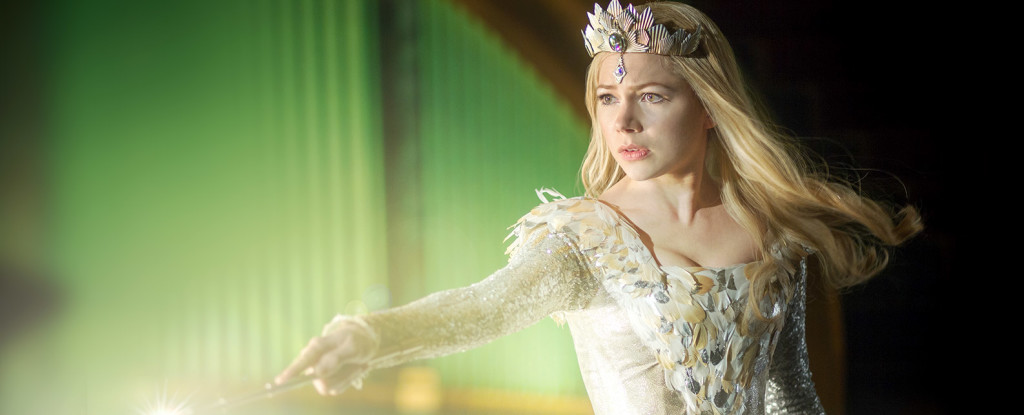Like so many fun things in life, “Oz the Great and Powerful” is just a little bit sexist.
A prequel to Frank Baum’s “The Wonderful Wizard of Oz” as well as the classic 1939 film adaptation, “Oz” sheds light on the origins of the Wizard of Oz and the Wicked Witch of the West.
The film follows Oscar Briggs (James Franco), a carnival magician, con man and shameless womanizer whose wanton philandering forces him to flee Kansas via hot air balloon. Somehow completely oblivious to the gigantic tornado threatening the carnival grounds, Oscar and his hot air balloon are quickly sucked into the eye of the storm and the spin lands him in Oz. Once in Oz, Oscar finds himself tugging on the heartstrings of three more women—three beautiful witches to be exact—who believe him to be the prophetic Wizard of Oz they’ve “been waiting for.” To save the land of Oz, Oscar must defeat the Wicked Witches with his illusive tricks and transparent good looks.
The film’s best technical moments are the ones that pay homage to the 1939 “Wizard of Oz” film starring Judy Garland. The black-and-white beginning of “Oz” is shot at a 4:3 aspect ratio, typical of films made prior to the late 1950s, and expands to the widescreen ratio when Oscar floats into the colorful Oz.
Although the film respects its lineage visually, its (dare I say) sexist depiction of Oscar and the witches of Oz distorts the original girl-powered story entirely.
Turns out, there are few protagonists as sleazy as the Wizard of Oz. After landing in Oz, he is unmoved by his fantastical surroundings, but infatuated by everything with a vagina. As fairies, bubbles and mountains shaped like something out of a Dr. Seuss book fly by, all Oscar seems to think is, “Look! An exotic woman wearing leather pants!” Even though he’s a bit of a chauvinist, Oscar’s boundless sleaziness makes the character unarguably funny.
In the witches, we see three exhausted and large-chested female stereotypes: the blonde bombshell, the catty beauty and the crazy ex-girlfriend. Good girl Glinda (Michelle Williams) is made to look and act like a ditsy blonde pin-up. Evanora (Rachel Weisz) is the Regina George of Oz—she stabs her friends in the back in hopes of ascending the social strata. And Theodora (Mila Kunis), who becomes the Wicked Witch of the West, is the clingy ex. On steroids.
The Wicked Witch of the West—a powerful female figure—is one of the most famous and terrifying villains in American pop culture because she is inherently evil. “Oz,” however, renders the Wicked Witch an obsessive, stupid and cliché woman scorned.
Within hours of meeting Oscar, Theodora falls hopelessly in love with him and becomes completely delusional. When she realizes that he has a wandering eye, she doesn’t just buy some ice cream and rent “The Notebook” like a normal person—she turns green, hops aboard a broomstick and starts throwing fireballs at happy, unsuspecting couples below.
And, well, you know the rest.












